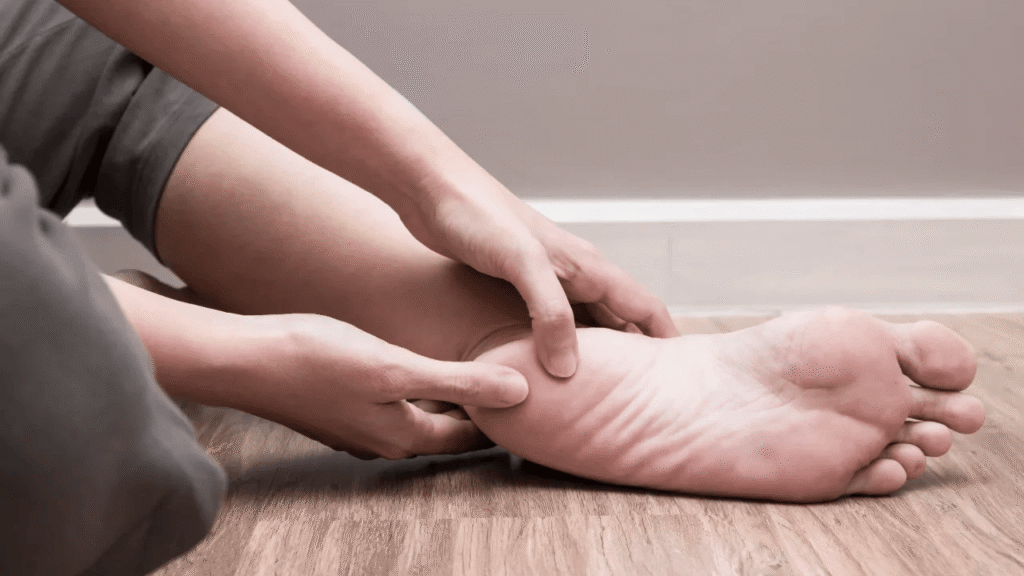What Is Plantar Fasciitis?
Plantar Fasciitis is one of the most common causes of heel pain. It happens when the plantar fascia—a thick band of tissue that connects your heel bone to your toes—gets inflamed or irritated. This band supports the arch of your foot, and when it’s overused or strained, it starts to hurt.
The pain is usually worst in the morning or after periods of rest. As you begin to walk, the fascia stretches and the pain may improve slightly, only to return again later in the day.
What Causes Plantar Fasciitis?
There isn’t just one cause, but a few common risk factors include:
- Prolonged standing or walking
- Flat feet or high arches
- Wearing unsupportive footwear
- Sudden increase in physical activity
- Being overweight
- Tight calf muscles or Achilles tendons
It’s common among runners, teachers, nurses, and people who spend long hours on their feet.
Signs & Symptoms to Watch For
- Sharp, stabbing heel pain, especially with first steps in the morning
- Pain after standing for long periods
- Discomfort when climbing stairs or walking barefoot
- Tenderness near the bottom of your heel
- A burning or aching sensation in the sole of the foot
If left untreated, it can become chronic and lead to changes in how you walk—causing pain in your knees, hips, or back.
How We Diagnose and Treat Plantar Fasciitis at The Physionic
Diagnosis
Our doctors begin with a clinical examination, checking for tenderness in the heel and evaluating your foot’s arch and movement. In some cases, an X-ray or ultrasound may be used to rule out other issues like bone spurs or stress fractures.
Treatment Options
Most patients recover with non-surgical treatments, such as:
Physiotherapy
This is the foundation of recovery. At The Physionic, we use stretching exercises, ultrasound therapy, and foot-strengthening techniques to reduce pain and inflammation.
Footwear Support
We recommend cushioned shoes or custom orthotic insoles to reduce pressure on the heel.
Pain Relief
Over-the-counter anti-inflammatory medications (NSAIDs) can help reduce pain and swelling.
Ice & Rest
Simple remedies like icing the heel and avoiding high-impact activities can make a big difference.
Night Splints
These keep your foot stretched overnight to relieve early-morning pain.
👉 Book your plantar fasciitis consultation now and start your path to pain-free walking.
When Does It Need More Serious Treatment?
If pain persists for more than 6–12 months with no relief, we may explore:
- Steroid injections for inflammation
- Shockwave therapy (ESWT)
- In rare cases, surgery to release the fascia
Tips for Managing Heel Pain at Home
- Stretch your calves and foot arch daily
- Avoid walking barefoot on hard floors
- Use a cold water bottle under your foot for 10–15 mins
- Maintain a healthy weight to reduce pressure
- Switch to supportive, cushioned shoes
Do you feel a sharp pain in your heel when you take your first steps in the morning? Does it get better throughout the day but return if you’ve been sitting or standing for too long? If that sounds familiar, there’s a good chance you’re dealing with a common foot condition called Plantar Fasciitis.
At The Physionic, we help patients like you find relief through accurate diagnosis, physiotherapy, and personalized care plans.

